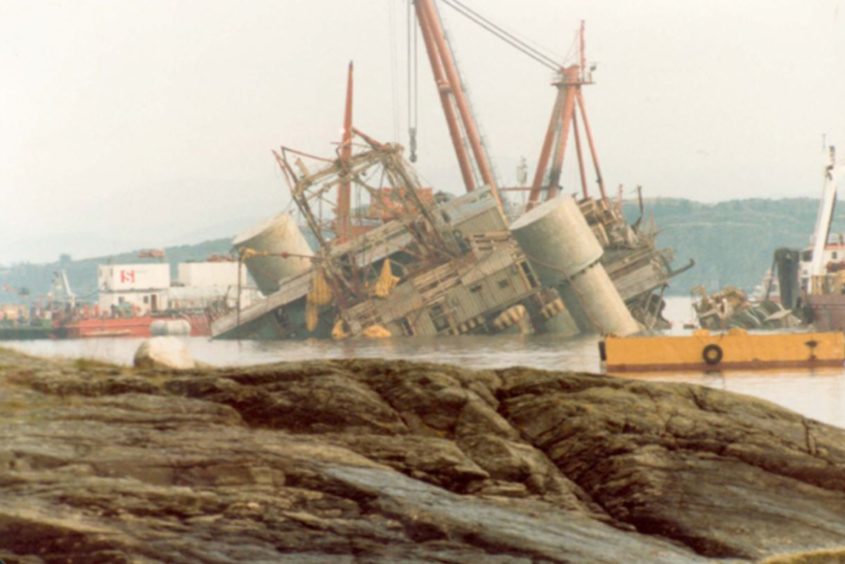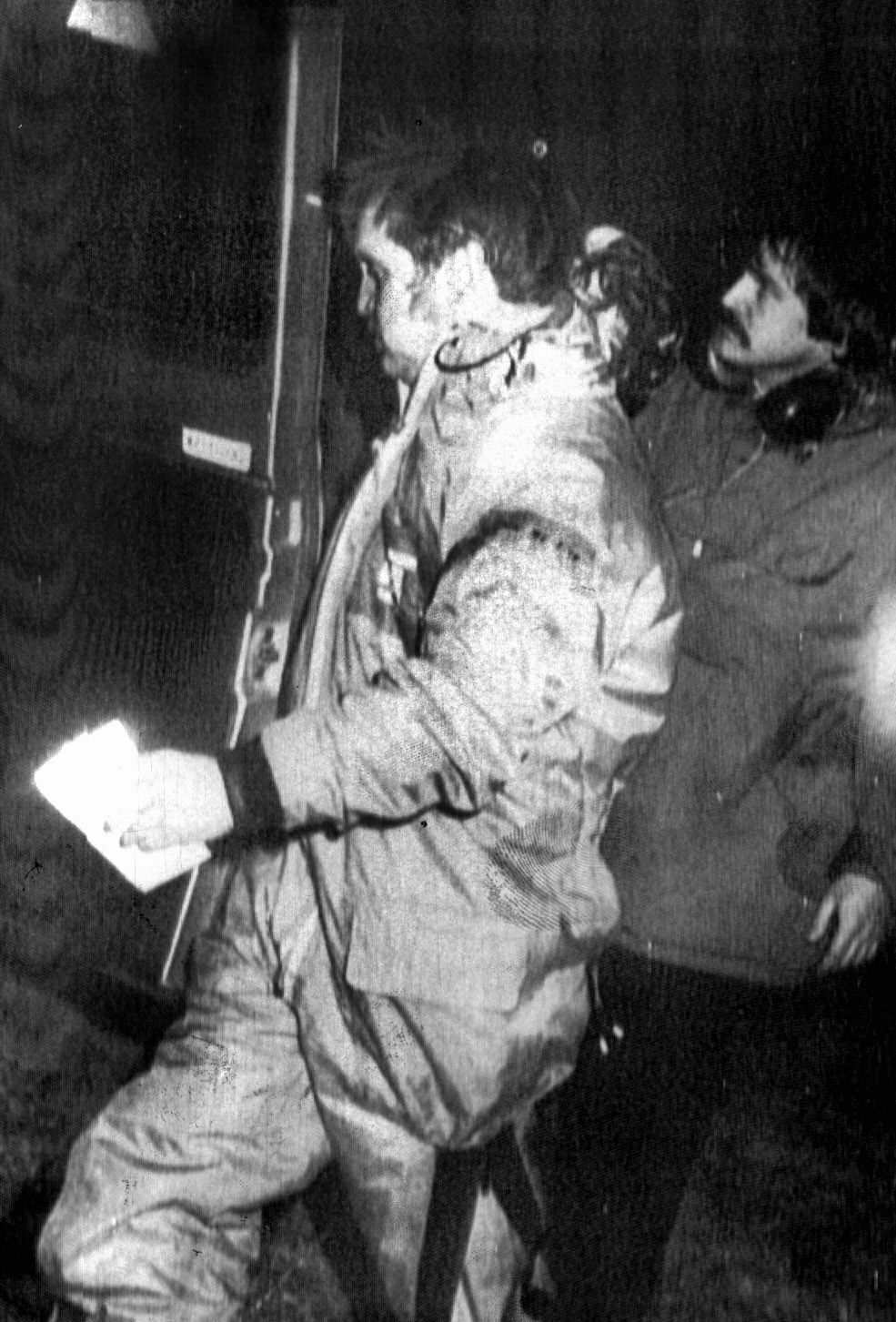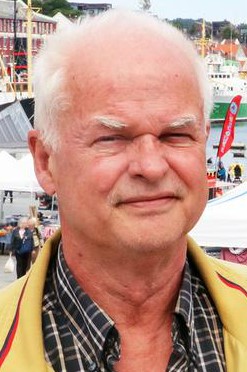
A group representing families and survivors of Norway’s worst industrial disaster has spoken of its “demand for a completely new inquiry” exactly 40 years later.
On March 27, 1980, 123 people were killed as the Alexander Kielland rig capsized in the North Sea, with more than 20 Brits among them – one of whom is believed to have been from Aberdeen.
Unlike the UK’s Piper Alpha, which would take place eight years later, the 1981 Kielland investigation was not a public inquiry, but a “closed process” with the public being unable to access related documents and archives for years to follow.
That, coupled with conflicting accounts of the cause of the disaster, has led to a degree of “mistrust” in the process.
However, new evidence has led to the Office of the Auditor General (OAG) agreeing to once again review the incident, reporting back to the Norwegian parliament this year.
Kian Reme, leader of the Kielland Network whose 28-year-old brother was among the 30 people never recovered from the wreckage, is optimistic about that statement to the Storting.
He said: “We hope and expect that when they deliver their report that they will recommend a full new inquiry.
“A very big frustration in Norway is the feeling that many things have been hidden and classified and so on, while in Piper Alpha I believe the process was much better in the sense that it was open, you could check their findings during the process.”
Mr Reme said there remains a “big question” on whether the original Norwegian Inquiry Commission’s assessment, that a welding fault was the single cause of the tragedy, was accurate.
He added: “That is why the Kielland Network today was established. We cannot accept that, in the largest industrial disaster in Norway ever, officials stick simply to the one theory which came from the Commission in ’81, even before they had visited the rig.”
It took just 20 minutes for the rig, being used as a workers’ accommodation vessel, to capsize after one of its five legs tore off 40 years ago, while stationed at the Edda platform in the Phillips-operated Greater Ekofisk Area.
The official report in 1981, two years before the rig had even been uprighted, stated the cause was a welding issue which led to a fault in a bracing.
This effectively blamed the French firm CFEM who constructed the rig at their yard in 1976, rather than operator Phillips or rig owner Stavanger Drilling.
Other factors, such as problems with the anchoring system and an explosion at another bracing, are also viewed as potential contributors to the incident.
By 1985, there was “complete confusion” over what caused the disaster as the French government produced its own report, conceding there was a welding issue but blaming the accident on the rig being mismanaged.
Tommas Skretting, an author on Kielland and journalist at the Stavanger Aftenblad newspaper, has spent more than five years researching the disaster and how it threatened Norway’s status as a young oil producing nation.
He said: “The French investigation arrived at a completely different conclusion than the Norwegian one and I don’t think this case will be closed before stories match and questions are answered in a credible and consistent way.
“The original Norwegian investigation report has not been perceived as very trustworthy by many people, especially not by the survivors. If the Office of the Auditor General finds any critical, blameworthy issues in the process, the Norwegian state has a unique opportunity to apologise to the survivors and offer them some kind of compensation.”
PRIEST’S DUTIES
Four decades ago, Mr Reme was finalising his training to become a minister of the Church of Norway when he heard of the Alexander Kielland disaster taking place.
One of his first tasks as a young priest would be to inform his own mother that his brother was among those to have perished.
It came after the police agreed to give him a list of those still missing, days after the accident, on behalf of the families involved. This would lead to him becoming an inadvertent figurehead for the bereaved for decades to follow.
That first manifested itself in the Kielland Foundation, established by the relatives and survivors to campaign for the rig to be made upright, which it eventually was in 1983, for further investigation and to recover the bodies that were still lost.
Families in the UK were also affected, as shown by letters from 1980 – declassified in 2013 – between Margaret Thatcher’s private secretary and the relatives of George Purcell, 31, and Brian Dowson, 36, about efforts to upright the rig.
A total of 23 Brits died in the disaster, including two Scots – Richard Milne, 40, from Renfrew and 25-year-old Robbie Morrison, believed to be from Aberdeen.
The Kielland Foundation, after successfully getting the rig uprighted, had a failed legal bid against Phillips Petroleum in the 80s, and a new challenge now may not even be possible, even if there is a new investigation.
Mr Skretting, of Stavanger Aftenblad said “the conditions are most likely outdated, meaning that any legal actions are not likely”.
However, that’s not what the new Kielland Network, set up in 2016, has in mind, according to Mr Reme.
He said: “Nobody among our members has ever mentioned the idea of trying to persecute, by legal means, individuals or companies or whoever.
“We had a big lawsuit against Phillips in the 1980s which failed after 10 years in the 90s in the US.
“But now, in this phase, there is nobody who is raising this issue of compensation or punishment or jailing. People are simply interested in knowing the truth as far as it is accessible.”
Part of the reason the Kielland group reformed was due to new evidence brought to light in the last decade by Marie Smith-Solbakken of the University of Stavanger and Hans-Jorgen Wallin Weihe of The Inland University of Applied Sciences who started an in-depth project on Alexander Kielland in 2012.
With special access to the archives and interviews with hundreds of people connected to the disaster, they produced fresh evidence, such as researching the stability of the anchoring system at Alexander Kielland, which has led to the OAG looking again at the case.
Since starting the research project in 2012, the pair have spoken to people from all walks of life, from a reindeer herder of the Sami community, an indigenous people from Norway’s remote northern region, who lost her boyfriend in the disaster, right down to Mr Weihe’s own mailman.
The professor of social work personally knew a number of people who died in the incident, adding, “being a Norwegian, we were all affected by disasters like that because we are such a small country”.
He said: “A lot of people felt like they had not been able to tell their experiences from it and their interpretations.
“There has been no public discourse about the causes of the disaster nor its consequences.
“So when we started to write about it and started to publish the interviews we made and got access to the archives, we found there were a lot of aspects of the disaster which had not really been covered in the official inquiry report.”
LESSONS AHEAD OF PIPER ALPHA
One point that Mr Weihe felt was not adequately covered was working culture offshore, unlike the investigation into the later Ocean Ranger disaster in Canada and the UK’s Cullen Inquiry into Piper Alpha in 1988.
He added: “Lord Cullen focussed a lot on the working culture on the platform and this was not really focussed at all in the Norwegian inquiry.
“I think the working culture really influences the safety standards on the platform so it was important to look into that. Both the Ocean Ranger and the Piper Alpha inquiries looked into those aspects and I think they should have done in the Norwegian case as well.”
Lessons, particularly around safety culture, from Alexander Kielland should have been learned in order to help prevent Piper Alpha, according to the son of one of the survivors of the UK disaster.
Marc Reid recently published research into the incident, which had an even heavier death toll than Kielland, through his role as a fellow at Strathclyde University into the moral long-term consequences of major disasters.
In his paper’s extract, he stated the “moral fallout” of Kielland was not in prominent view ahead of Piper Alpha.
He added: “The long-term moral implications of the preceding disaster were presumably not given sufficient exposure to motivate workers and decision-makers on the newer platforms to adopt more proactive safety cultures and procedures.”
Anne Myhrvold, director of Norway’s Petroleum Safety Authority (PSA), agrees that the “industry might have been better to share learnings from accidents across the world”, but added that Kielland was a “wake-up call” for the country’s oil and gas sector, which was still in its infancy at the time.
While there are criticisms of the original inquiry itself, most agree that Norway’s safety regime made sweeping, positive changes following Kielland.
Many of the deaths from the disaster related to a lack of training and safety equipment on board, which the industry reacted to by putting in requirements for robust emergency preparedness measures offshore.
Meanwhile the petroleum act of 1985 set into law more clarity on offshore safety, with liability falling to individual companies .
“The company itself every day has responsibility for safety. The regulators come in addition, they do not replace that”, Ms Myhrvold said.
“I think the reason for us using this tragic anniversary is to make sure there is never another major accident. To revisit Alexander Kielland in particular, but also other major accidents. It’s almost 10 years since Deepwater Horizon in April.
“I think we’d like this year to have the discussions and reflect on the tragic outcome of major accidents that have happened and reinforce the commitment to work every day to avoid another one.”
CORONAVIRUS
Another spot which has been hoping to mark today’s anniversary was the Petroleum Museum in Stavanger.
The establishment has had long-running displays on Kielland over its 20-year history but has now been preparing a special exhibition highlighting the lessons learned in the four decades since.
However, with the recent outbreak of the coronavirus, the museum’s doors are currently closed, but exhibitions director Anja Fremo hopes to have it on display by the year’s end.
She said: “‘The legacy of Kielland’, we call it in English.
“It’s both about the catastrophe and what we learned from it in terms of making jobs safer offshore and onshore.
“In Norway, Alexander Kielland was a turning point in the focus on safety. When 123 quite young men died on a job it was a really quite shocking accident in the Norwegian society.
“For the museum it is important to keep this story alive and bring it into our time.”

 © Norwegian Petroleum Museum
© Norwegian Petroleum Museum

